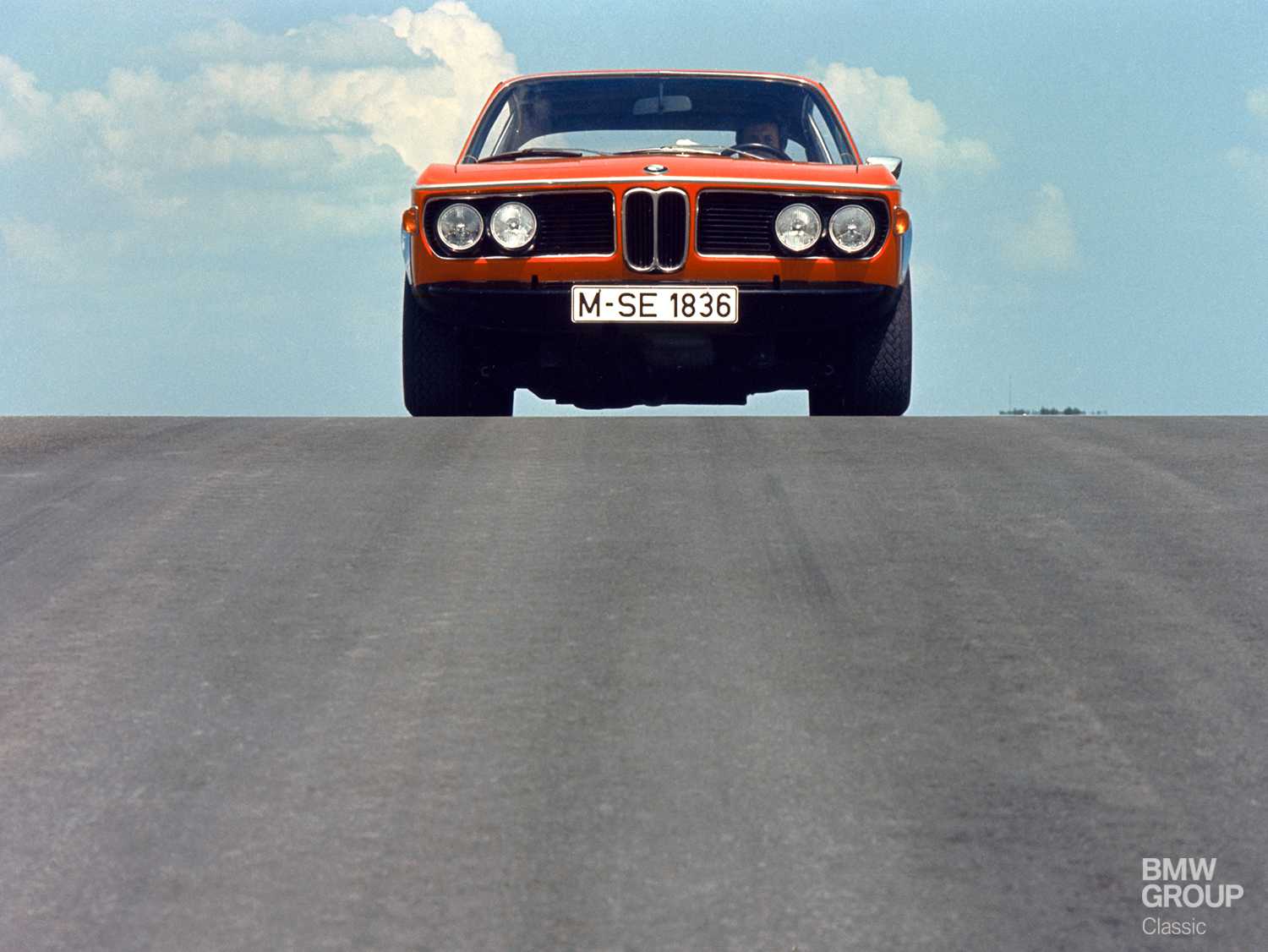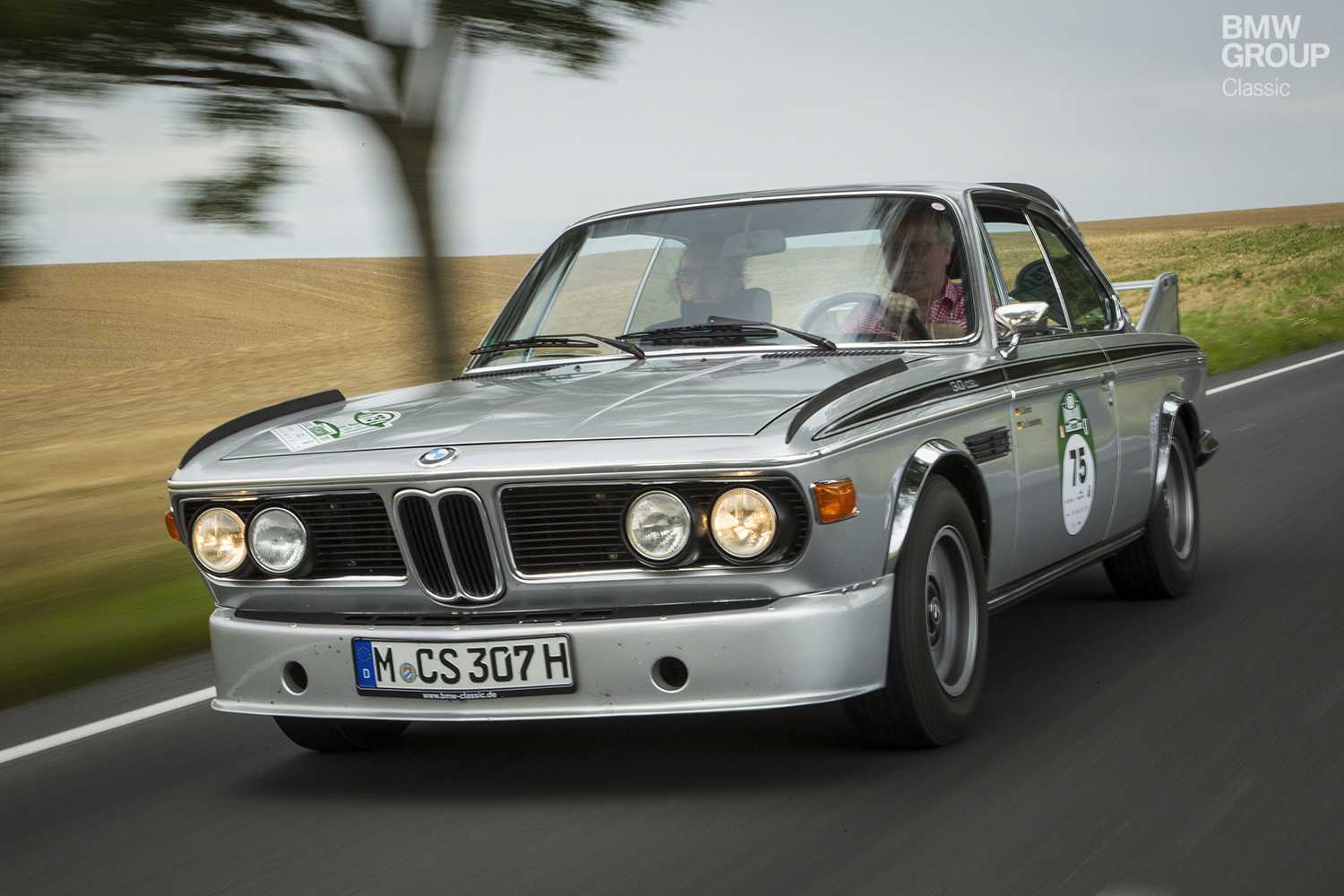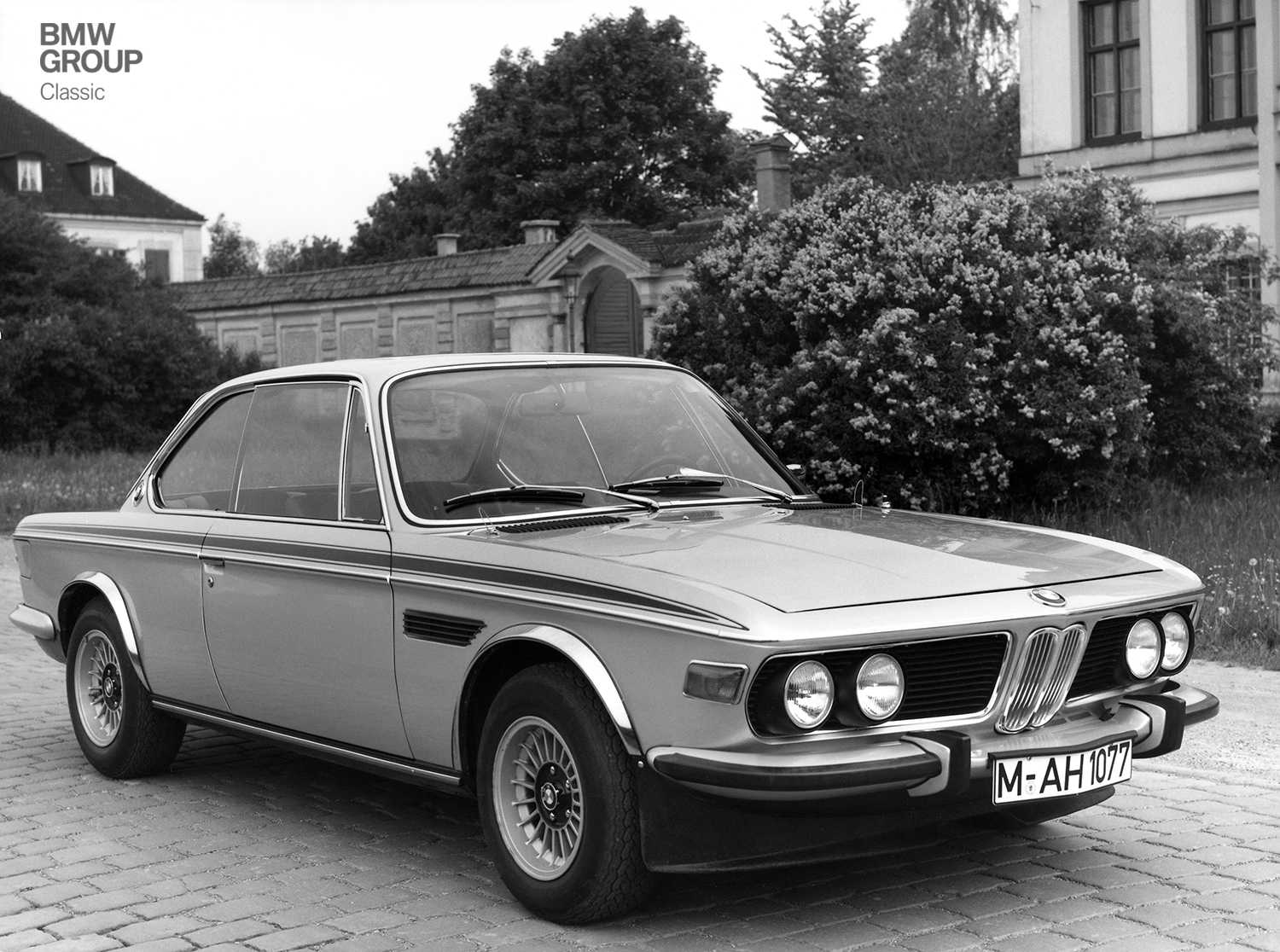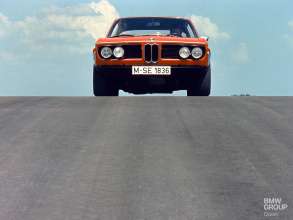The elegantly, luxuriously large E9 coupe built by BMW was really too heavy to be eyeing up a successful career in motor sport. But the CSL (Coupe, Sport, Lightweight) version changed all that, shedding bulk wherever it could and duly showing its rivals a clean set of heels. Decked out in an extravagant suite of spoilers and Motorsport GmbH’s soon-to-be-legendary M stripes, the CSL racing coupe served as the style icon for a glorious era in motor racing. The wonderfully rare road-spec version was also quick to earn itself cult status – not least in full “Batmobile” regalia.
Back in the day, touring car races attracted spectators in even greater numbers than they do now. After all, here was your chance to see cars still easily recognisable as everyday family runabouts fighting it out on a race track. The stars of the 1960s included the BMW 1800 TI/SA and 2000 TI, Hubert Hahne piloting the latter to the first sub-ten-minute lap of the Nürburgring Nordschleife. The smaller and lighter BMW 02 seamlessly extended this success story over all types of terrain – but also left clear air above it in the BMW line-up for a model of superior grandeur. It was a gap the elegant E9 six-cylinder coupe appeared well suited to fill.
BMW tuner Alpina lined up for the 24-hour race at Spa-Francorchamps in 1969 with a debutant in its ranks: the BMW 2800 CS. Visually, the car didn’t look that different from its standard production sibling; indeed, Alpina chief Burkard Bovensiepen soon established it was carrying too much of its donor car’s puppy fat and set about developing a lighter basis for the racing machine. A little more power wouldn’t go amiss either, he was told. There was, however, much to be done before the new design would be ready for the track. Not least because 1,000 examples of a road-going equivalent had to be produced to meet homologation rules.
M for motivation.
BMW’s new racing boss Jochen Neerpasch and chassis expert Martin Braungart arrived at Munich’s freshly formed BMW Motorsport GmbH in May 1972. Driven by the lure of the prize on offer, they ensured 1,006 lightweight coupes for road use would roll off the assembly line, thus clearing the main hurdle to Group 2 homologation. Neerpasch’s goal was to reconfigure and professionalise BMW’s motor sport activities. And a now fondly remembered car came to symbolise a mission successfully accomplished.
Spoiler alert! The “Batmobile”.
Its unmissable spoilers and other aerodynamic addenda became signature features of the 1973 BMW 3.0 CSL “Batmobile”. Indeed all those wings and fins were chiefly responsible for the mass turning of heads towards this final variant of the CSL. Not that the road-going version was allowed to wear the full set; the TÜV inspection authorities executed something of a crackdown at the rear, in particular. Curiously, the road-legal lightweight coupe could, though, be delivered with the full spoiler kit in the boot at the customer’s behest.
The BMW 3.0 CSL now produced 206 hp and – from as early as 1972 – housed a fuel-injected engine. This special-edition car went without luxuries such as power windows, plus the doors, boot lid and bonnet were made from aluminium and the rear windows from Plexiglas. The result was a paltry 1,062 kilos on the scales, the “L” (for lightweight) in the CSL’s designation well and truly earning its keep.
Making light work of winning.
In late 1972 the motor sport authorities finally gave the car their official blessing, kicking off a scarcely credible run of success. Successive power boosts and a further 162 kg of weight savings helped the performance-honed BMW 3.0 CSL racing coupe to immediate success in the European Touring Car Championship in 1973 – the first of six titles in total. It also hit the headlines in the German Racing Championship and the IMSA series in the US, plus various other endurance races. And in 1975 it provided the canvas for the legendary first BMW Art Car conceived by Alexander Calder.
Faster, louder, harder.
The road-trim CSL was already big on speed, volume and edge; here was a full-fat driver’s car, whose bucket seats and racing steering wheel flagged it up as a genuine sports car from the moment you climbed aboard. Displacement and output both saw incremental gains. In its 23/1974 edition, German motoring magazine auto motor und sporttested a “Batmobile” producing 206 hp from its 3.153-litre displacement. That spelt acceleration of 0 – 100 km (62 mph) in 7.0 seconds and a top speed of 220 km/h (137 mph), although the car tested needed the front spoiler in place to record those figures. Customers could choose to forgo it, of course, or even specify the bumper from the luxury version of the E9 (courtesy of the “Stadtpaket”) in its place.
Today, a BMW 3.0 CSL bears witness to a time that was free of shackles. For most of those who coveted this extraordinary car, its lofty price tag meant it would remain a car of their dreams rather than reality. And little has changed on that front. Which makes it all the sweeter to spot one on the road again as it brings the old magic back to life.
YouTube video tips:
GO LIKE SCHNELL – The Story of BMW Motorsport in the USA
https://www.youtube.com/watch?v=Q180dRN5QhA
Historic works films:




